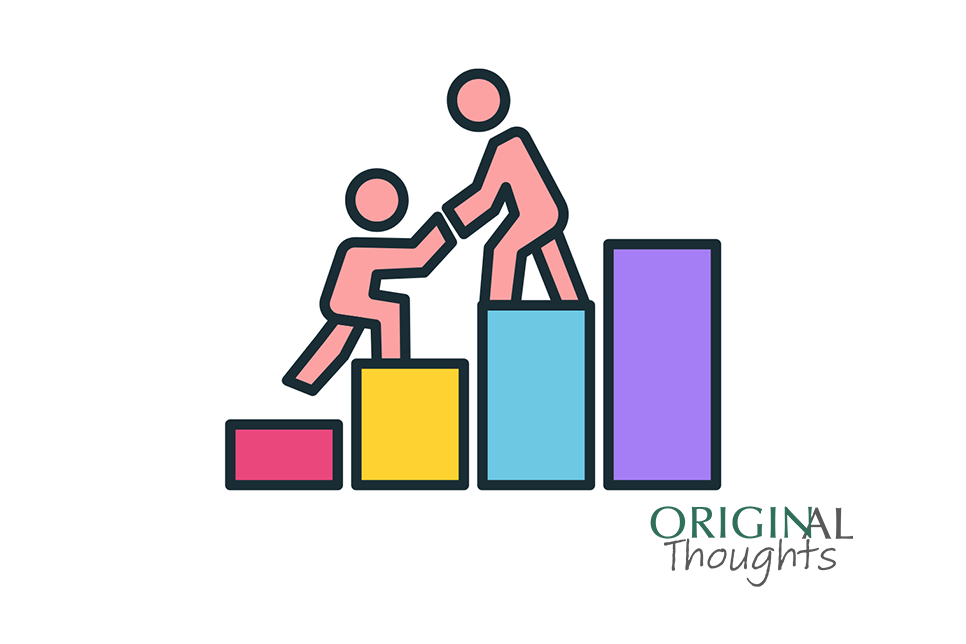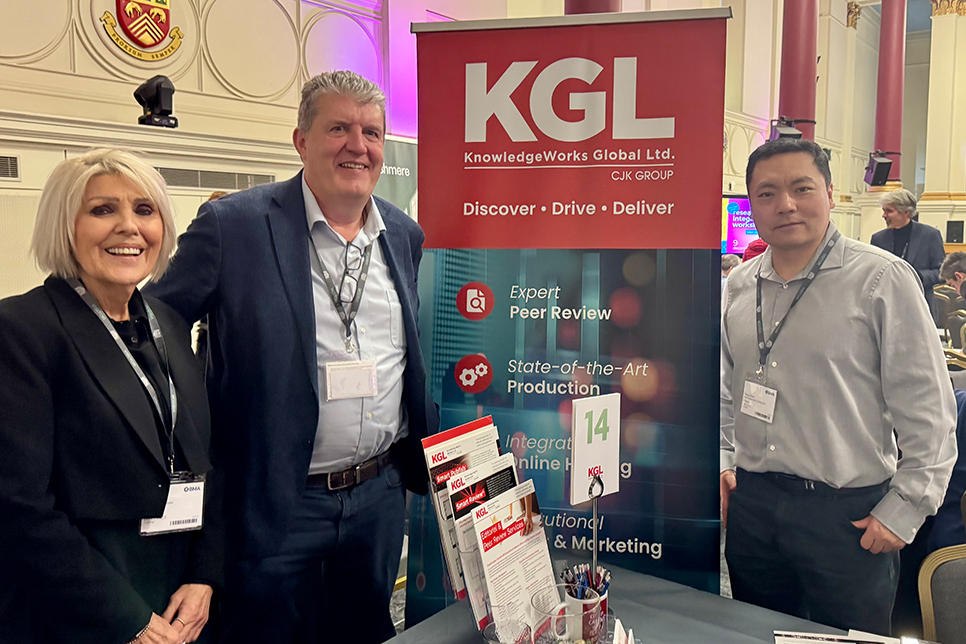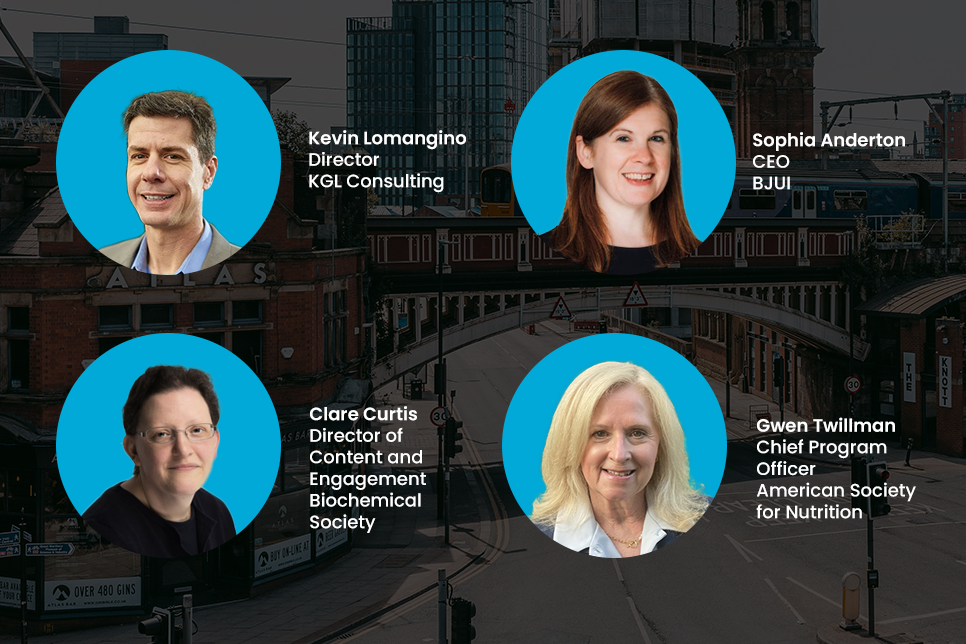First posted on the ORIGINal Thoughts Blog
By Patricia (Patty) Baskin, MS
Deputy Chief, Publications
American Academy of Neurology
Linkedin: linkedin.com/in/patricia-patty-baskin-6a391910/
Take Home Points:
What Mentorship Means
When I googled the term mentorship, the search returned several hundred results. I was looking for a simple way to define it and found this definition: “A helping relationship in which one person, usually more experienced or senior, takes time to assist the career, professional, or personal development of someone else, who is known as a mentee, mentoree, or protégé.” Although mentoring models can range from simple to complex, the bottom line is that mentorship relationships are built on trust, shared experiences, and a mutual commitment to growth. Whether you’re a mentor or a mentee, this dynamic provides a space for open dialogue, personal reflection, and meaningful connection. It’s about listening, sharing insights, and being present and supportive as someone navigates their career.
The Mentor Experience
As a mentor, you become a role model, a connector, and a coach. Mentoring goes beyond networking and transferring knowledge to fostering critical reflection and application of what is learned. You provide a helping hand to build skills, maximize strengths, and address areas for improvement. You support decision-making, help clarify ideas, act as a sounding board, provide honest, encouraging feedback, and often help set goals for further development. In short, you become part of someone’s journey—and in doing so, you enrich your own.
Mentoring offers tangible benefits for the mentor. It helps to validate and reaffirm your knowledge. It’s common to start with a touch of imposter syndrome, wondering if you truly have enough to offer. But over time, you realize just how much you’ve learned and how valuable your experience is to someone new to the field or just starting a career. As highlighted in other articles from Science Editor [Baskin 2024, 2022], many mentors report a new sense of self-awareness, inspiration from fresh ideas, and greater fulfillment from helping shape the next generation of professionals.
At its core, mentorship is all about a caring, supportive relationship. It’s about empowering others: providing access to training, continuing education, and networking; validating concerns; and suggesting strategies or resources to help others move forward. It’s not just about career advancement, but about helping people feel seen, heard, and supported. A rewarding aspect of mentoring is helping someone prioritize and achieve their goals.
Advice for effective mentoring is abundant on the Internet, including in the Science Editor article by Gastel, 2024. The mentorship process requires active listening, empathy, and a willingness to be vulnerable. As a mentor, it’s OK to say, “I don’t have the answer—but let’s think about it together,” or, “I’ve struggled with that too.” These moments create authentic, trusting relationships that often extend far beyond the formal mentorship period.
The Mentee Experience
Mentees benefit from the opportunity to learn the ropes from someone already working in the profession. For those new to publishing or scientific editing, the learning curve can be steep. Having a mentor demystifies that process and offers a supportive presence for mentees exploring their place in the field.
Mentorship empowers mentees through knowledge, skill development, exposure to professional networks, constructive feedback on ideas, and validation of concerns about skills, career path, or ability to succeed. Mentorship helps counter doubts with encouragement, resources, and real-world guidance.
Whether mentees are early in their careers, navigating transitions, or simply curious about where to go next, mentorship can open doors. Being mentored is an excellent opportunity to gain perspective, expand networks, and gain confidence in mentee’s chosen paths.
Mentorship in Context: Academia, Medicine, and Publishing
- Mentoring Editors. In medicine and academia, mentorship is a built-in part of the culture. Clinical training, research labs, and academic programs rely on apprenticeship-style learning, observation, and coaching. That tradition can be a great asset in editorial roles, especially when actively applied to mentoring new editors, associate editors, and editorial board members who are naturally open to extending that tradition. In fact, they often seek it out as they step into new roles in publishing. It’s not just about technical training, although that’s important, but it’s about helping new editors understand not only policies and procedures but also the values and culture of the organization. That includes topics like navigating ethical issues, handling sensitive manuscripts, and making decisions with transparency and fairness.
- Mentoring Editorial Staff. Throughout my own career, I’ve had the opportunity to mentor individuals working in a variety of roles in publishing. Each experience has been unique, shaped by the mentee’s goals and circumstances, and each experience helped me grow alongside them. The common process followed was that at our first meeting, we collaborated in crystallizing the mentee’s goals and set ground rules for the relationship, including establishing a meeting cadence and regular milestones for touching base about our interaction and how each of us felt things were going. We built in time to reflect into our regular meeting, talked openly and honestly about concerns, and identified assignments for exploration between meetings.
- Mentee A was uncertain about her current job’s future and was exploring other career opportunities. She needed networking support and a sounding board to talk through her ideas. Through our conversations, she achieved every goal she initially set.
- Mentee B was considering a shift from pharmaceutical writing to scholarly journals and needed an insider’s perspective. After connecting with a couple of journals’ managing editors and spending some time shadowing them in their work, she ultimately decided to remain in her current field—but with a clearer understanding of what she valued.
- Mentee C wanted to explore the intersection of public health communication and publishing, while pursuing a higher degree. Our conversations helped her envision new ways to merge her interests.
- Mentee D was working in isolation as the only writer in her department and craved connection and support. Mentorship provided interactions and guidance, opening doors to possible new roles.
- Mentee E was involved in a publications product company and needed help restructuring her team. I was able to offer resources and advice for hiring and reassigning roles.
- Mentee F faced challenges interacting with strong personalities in her department. We worked together to navigate society processes and improve working relationships.
- Mentee G was climbing the ranks in her organization. She needed help integrating her new degree, managing projects, and working with upper leadership. Mentoring gave her the tools and contacts to step confidently into broader responsibilities.
- Mentor H was exploring whether her current job was the right long-term fit and needed guidance on networking and future career opportunities. We collaborated in creating a description of her dream job and set goals to explore opportunities in her areas of interest.
What all these relationships had in common was this: someone needed a sounding board, and I had the privilege of being the listening ear and supporter.
These relationships didn’t end with a single meeting or goal. Several of these mentees stayed in touch over the years, seeking periodic advice or simply sharing updates. The trust and connection built during those first few months formed lasting friendships.
Designing and Running Mentorship Programs
Recognizing the value of mentorship is one thing; creating an effective program is another. I’ve been involved in developing mentorship initiatives for both the Council of Science Editors (CSE) and the American Academy of Neurology (AAN), each with its own unique structure and culture.
I was incentivized to launch the CSE mentorship program after I read an article about retaining society presidents after their terms of office along with other experienced professionals by keeping them involved some way —such as mentoring those in earlier career stages. When setting up the program, I wanted to provide a space that was more than just professional; it needed to feel safe and welcoming. I collaborated with the executive director at the time to explore how mentor programs were managed in other societies. Crucially, we paid close attention to the initial application forms and process, asking participants to describe their goals and needs. This helped us match mentor-mentee pairs effectively, considering both career stage and personal preferences. We developed forms and materials to guide the first three months of conversations that help the pairs (dyads) identify goals, set priorities and timelines, and start meaningful dialogue. We regularly checked in with participants through surveys and group meetings to understand how the relationships were progressing and to adjust the program as needed.
With AAN’s pilot program, we adopted a more workplace-focused approach, extending beyond the usual onboarding resources, holding group events, and structured opportunity for feedback—including a graduation party! In this case, we had the benefit of a consultant who handled the applications, helped to match the dyads, and checked in regularly with the mentors. Our goals for this program included inspiring staff to connect to the vision of the organization, cultivating untapped competencies in senior-level mentors, increasing engagement, fostering leadership and professional development, and increasing productivity. Reflections from surveys and at the party showed that participants not only gained valuable insights but also felt more connected to the organization. It was heartening to see them feel less isolated and more capable of facing challenges in their roles.
One opportunity that should not be missed in setting up a program is the consideration of reverse mentoring. Although it is important to encourage mentorships between the experienced employees and newer team members, it can be equally valuable to create opportunities for reverse sharing, especially in areas such as digital technology and AI. When the younger, more digital worker shares ideas or tech options, the more experienced employees can use their own knowledge and expertise to make new processes work and new ideas come to fruition. Again, this type of mentoring provides the opportunity for reciprocal learning; for example, the more experienced mentee in this situation may be in a position to explain the need for patience from the younger mentor regarding business and budgeting processes, especially when they are passionate about new ideas but often hear ‘no’ from managers.
The Personal Impact of Mentoring
Looking back, some of the most rewarding moments in my career have come from mentoring others. I’ve worked with mentees who later transitioned into new fields, earned advanced degrees, or moved into leadership roles within their organizations. In some cases, our relationship continued for years, evolving from mentor-mentee to peer-to-peer.
I’ve also benefited immensely from having mentors myself. Like many colleagues, I didn’t begin my career with the intent of working in journal publishing, coming instead from a science background, an experience that I’ve learned is far from uncommon. Mentoring from a predecessor was a vital opportunity to learn the profession from someone who was already “in” and provided a bridge into the culture of editorial work. One of the most formative relationships was with an experienced editor and leader who provided valuable advice on networking with society leadership [related at Baskin, 2024] and assurance of his confidence in me. I am also married to a journal editor who provides insights from the editor’s perspective, and our conversations often span the practical aspects of publishing management to the philosophically editorial (my young daughter once remarked at dinner: ‘Can’t we ever talk about anything but journals?’). Having these voices in my life has helped me feel more grounded in my career, more confident in my decisions, and more aware of my own capacity to lead and mentor others.
Moving Forward
For those considering mentorship—whether as a mentor or mentee—I encourage you to take the leap. For mentees, don’t be afraid to ask for guidance. You’re not alone, and the people who’ve walked this path before you are often eager to help. Multiple mentoring programs are available within the realm of scholarly publishing to help you take that leap; in addition to CSE’s Mentorship Program, others include the Society for Scholarly Publishing’s Mentorship Program, the International Association of Scientific, Technical and Medical Publishers’ (STM) Mentorship Program, and the Association of Learned and Professional Society Publishers’ (ALPSP) Mentorship Scheme.
Ultimately, mentorship is about care and connection. For mentors, it’s about reaching across career stages and disciplines to say, “I see you. I’ve been there. Let’s walk this together.” For mentees, it can help you find your footing—and flourish.
Origin Editorial is now part of KnowledgeWorks Global Ltd., the industry leader in editorial, production, online hosting, and transformative services for every stage of the content lifecycle. We are your source for society services, market analysis, intelligent automation, digital delivery, and more. Email us at info@kwglobal.com.






